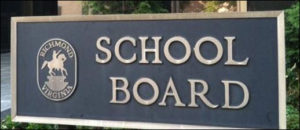 In purportedly good news for the Richmond Public School system, chronic absenteeism is on the decline. Reports the Richmond Times-Dispatch:
In purportedly good news for the Richmond Public School system, chronic absenteeism is on the decline. Reports the Richmond Times-Dispatch:
Fourteen percent of city school students have missed at least 10 percent of the school year, as of the beginning of the month. Last year, 16 percent of students were chronically absent. That means about 600 fewer students are chronically absent this year compared with last.
“Even one chronically absent student is one too many,” said Superintendent Jason Kamras. “But we’re heading in the right direction.”
Absenteeism is one of the measures adopted by the Virginia Department of Education to evaluate schools for purposes of accreditation. In VDOE data released earlier this fall, more than one in four schools received poor ratings for their attendance.
The reason I say that this is “purportedly” good news for Richmond city schools is that I am not persuaded that rounding up absentee kids and putting them back in school does anything to (a) increase their learning, or (b) help the learning of their classmates. Compelling a kid to park his (or her) carcass in a school building is no guarantee that they won’t skip class and just hang out, or, if they do enter the classroom, that they won’t disrupt the proceedings out of boredom or resentment for having been forced to be there.
While it makes educational bureaucrats delighted to see reduced absenteeism, someone might want to ask teachers how happy they are to have chronic school-skippers back in the classroom.
There are ways to track the effects of bringing truants back into school. Schools maintain records on disciplinary infractions. One might predict an increase in disciplinary infractions and disciplinary actions as a result of schools’ “success” in reducing absenteeism. Of course, in the real world we live in, Richmond Public Schools have adopted a therapeutic approach to dealing with disruptive students. Under tremendous pressure to reduce the number of disciplinary actions, teachers and principles may not report infractions that they would have in the past. So, there is no guarantee that increased misbehavior, if it occurs, will show up in the statistics.
Here’s what will show up in the statistics. Teachers will burn out more quickly, and many will quit schools where disciplinary issues are the worst. This will be reflected in a higher rate of churn. While schools don’t publish teacher turnover as a metric, they do publish numbers on district-wide teacher shortfalls. As discipline deteriorates, we might expect shortfalls to intensify.
Another potential effect will be deteriorating classroom conditions. Students who want to learn are deprived of instructional time as teachers devote more attention to troublemakers. If students learn less, they will score worse in standardized tests.
I may be totally wrong. Reducing absenteeism may lead to felicitous educational outcomes for everyone. But there will be no way to tell if I’m right or wrong because schools aren’t performing the requisite analysis to find out. Until such analysis is made available, Richmond schools are acting in blind faith that they’re doing more good than harm.


